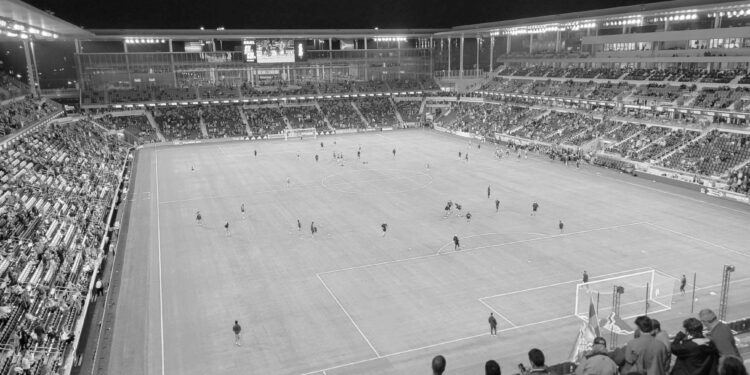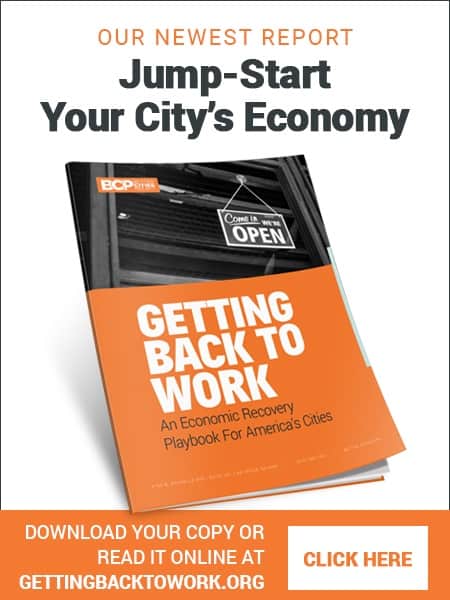Lawmakers often justify those subsidies by saying they’ll create jobs, boost local businesses and attract tourists. But economists are skeptical. A 2017 survey found that 80% of economists think the costs of stadium subsidies outweigh their benefits. One analysis even compared the local economic impact of a sports franchise with that of a midsize department store.
As professors who study stadium financing, we wanted to dig deeper into the impact of ownership strategy in sports and economic development goals. So, in partnership with former MBA student and now graduate Jessica Timerman, we recently wrote a case study focused on our hometown’s foray into Major League Soccer. Starting in 2022, St. Louis welcomed a new team, CITY SC, and a new stadium, CITYPARK, both of which received significant family funding.
We came away with four key lessons from this work.
1. Local families care more about the community
Our story began when the Rams left St. Louis for Los Angeles in 2015, leaving the city with a struggling downtown and an underused NFL stadium. Sensing this gap, a few groups tried to build momentum around soccer, a sport with a deep history in St. Louis. But in 2017, city voters rejected a $60 million proposal to bring a new soccer stadium to town.
In the absence of broader taxpayer support, it was a local family – the Taylors of Enterprise Mobility – that came in with both financial backing and a novel strategy focused on economic development in the short term and profit in the long term. The Taylors secured $34.5 million in tax incentives but avoided broader public subsidies. Importantly, the family privately financed the construction.
It’s not surprising that family ownership would be a good fit for a civic project: Research shows that family businesses – especially those that are committed to a community – tend to value nonfinancial objectives as well as pure profit, and are willing to wait longer to see returns on their investment. This kind of “patient capital” is often a key to long-term civic improvement projects.
These factors likely contributed to the decision to pursue a form of private development that took advantage of tax incentives but didn’t fully depend on public funding.
As family patriarch Andrew Taylor noted in the case write-up, “CITY Soccer is a for-profit enterprise, but the profit may not be here for a while.”
To be fair, the wait for profits – for the family and city alike – might not be that long. Before the soccer team’s first game, the St. Louis Development Corporation estimated the project would generate $10 million for the city over the next decade, but estimates of taxable revenue from the team’s first year, at a city tax rate of 5.45%, make such 10-year projections seem conservative.
And fans are buying tickets: CITYPARK sold out 34 home games in a row, becoming Major League Soccer’s 11th most valuable franchise – out of 29 – according to Forbes. It’s worth $680 million.
But not every city has a Taylor family to bear the costs of this kind of project, and there are clearly cases of family owners who are more interested in extracting money from taxpayers than in building community. That raises the question: What other principles from this case could enhance similar projects seeking broader economic impact?
2. To maximize payoff, get the site right
One critical issue in economic development is targeting investments where they can do the most good. For example, research shows that even tax incentives for businesses – which many academics, including one of us, have criticized – have a much higher return on investment if they target high-unemployment areas.
In other words, it’s smarter to build a stadium in a distressed area than in a wealthy neighborhood. That’s what we saw with CITYPARK. Downtown West, where it was built, was once known as part of the Mill Creek Valley neighborhood. In the late 1950s, Mill Creek Valley housed 20,000 predominantly black residents and 800 businesses before these citizens were relocated to the north part of the city proper and corresponding county and the area was razed to make way for a highway.
This history matters. To this day, three of the top five neighborhoods for housing vouchers are located in and near the current stadium, all of which make it a higher-impact area for development.
Targeting development in places without much momentum doesn’t just generate new economic activity. It also reduces the potential for negative economic returns, such as when a game day squeezes out other nearby activity. While more precise work remains to be done, early economic impact studies of CITYPARK have been positive.
3. Don’t let your stadium go empty most of the year
A related issue centers on the event calendar. One reason NFL stadiums have such dismal returns is that they host just eight home games a year.
CITYPARK decided to avoid this by housing the stadium, practice facility and team headquarters in the same location – something unique for a city located within an urban corridor. It now hosts about 200 events annually, many of which have nothing to do with soccer.
4. Remember that workers and suppliers are your neighbors
Research on anchor institutions, such as sports teams, hospitals and large businesses, suggests that paying good wages can have a positive impact on local economies. It’s important to remember that sports teams are small to midsize businesses, a segment that disproportionately fails to create “good jobs,” as measured by pay, benefits and culture. By paying workers well, sports teams also invest in their local economies.
Using local vendors can also have positive economic effects. CITY SC, for example, partnered with local James Beard winner Gerard Craft as their chief flavor officer, and then had him curate a roster of local food vendors within the stadium walls. In the first two seasons, $5.5 million of revenue went to local restaurant partners on match day, and 60% of attendees surveyed said they were more likely to seek out these venues outside of the games.
Ownership groups advocating for clear economic returns from large-scale stadium projects face a steep uphill battle, as most deals result in financial losses. Public financial support is almost always a losing proposition for communities in the narrow economic sense of the term.
However, the intangible benefits of having a big sports arena – such as fostering civic pride and social connections – shouldn’t be overlooked.
A key way to justify the cost of these large projects is by minimizing the public financial burden and finding long-term investors whose motivations go beyond just making a buck. For many teams, this points to the families sitting in the owner’s box.
But for cities without such benefactors, practices like we saw in St. Louis — such as opening a stadium in a distressed area with minimal public funding and using creative strategies to get the community on board – offer an innovative model.
The next year will bring plenty of changes to CITYPARK, including a new name. But while the stadium’s future is unwritten, and its long-term economic impact remains to be seen, we think it stands out as an example worth watching.









